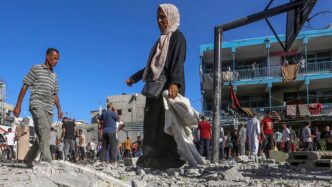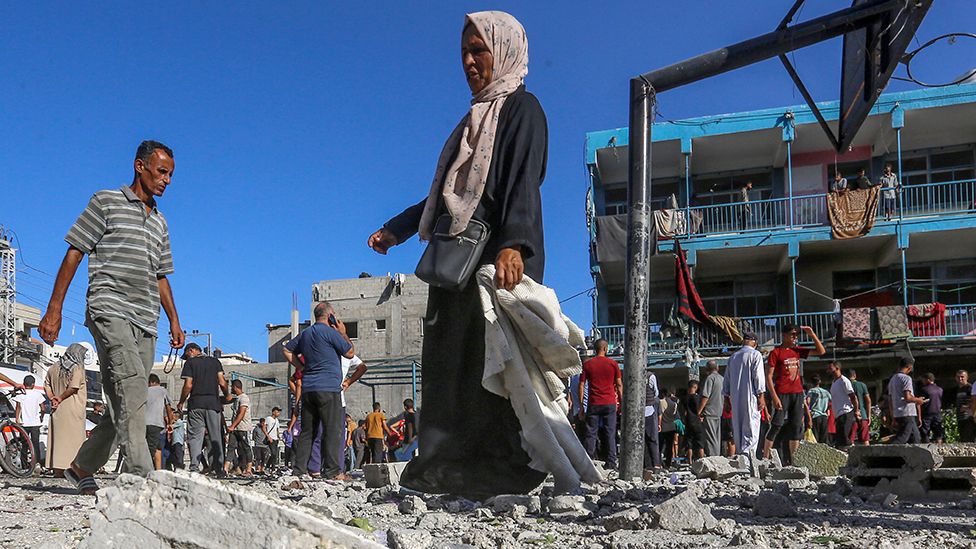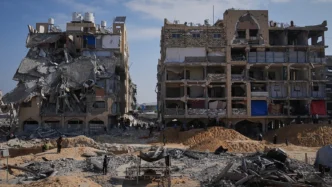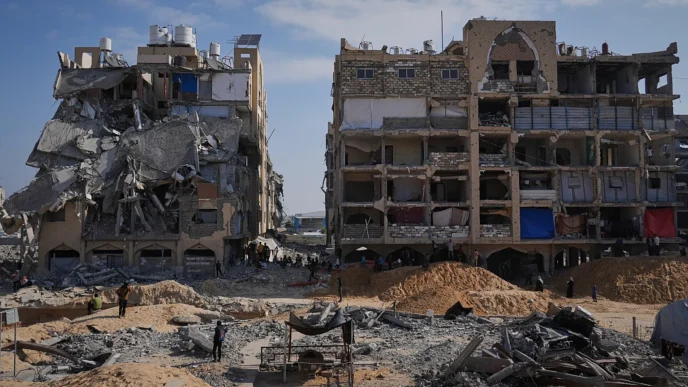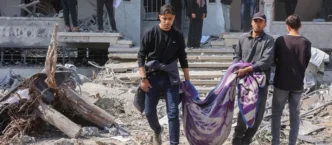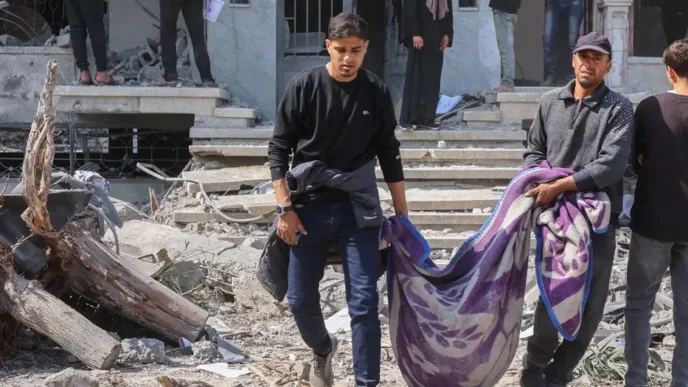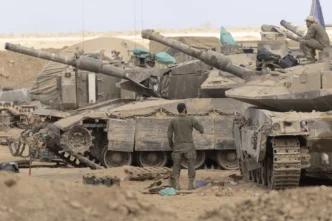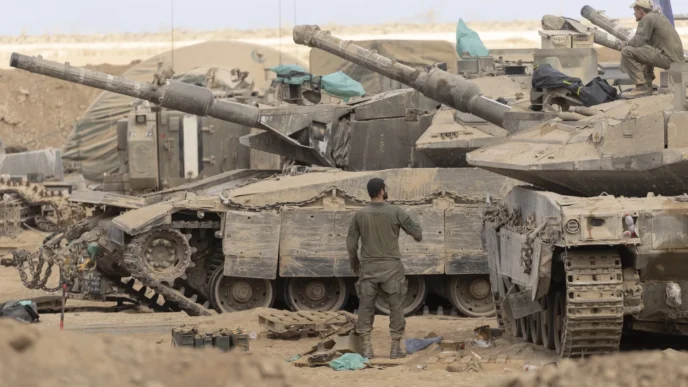The United States is urgently working to salvage a fragile ceasefire and hostage-release deal in Gaza after a sudden flare-up in violence cast serious doubt over ongoing negotiations. Palestinian media reported three Israeli airstrikes across central and southern Gaza late Tuesday, while the Israel Defense Forces (IDF) accused Hamas of launching fresh attacks against Israeli troops beyond a key demarcation line—raising fears that months of painstaking diplomacy may unravel once again.
The escalation comes as U.S. Secretary of State officials shuttle between Cairo, Doha, and Tel Aviv in a last-ditch effort to finalize a truce framework supported by Washington, Qatar, and Egypt. With the humanitarian crisis in Gaza deepening and regional tensions spiking, U.S. officials now warn that “the window for a deal is closing.”
Fragile Negotiations at a Critical Moment
After weeks of indirect talks between Israel and Hamas, mediated by Qatar and Egypt, the U.S.-backed proposal had seemed closer to success than at any point in recent months. The framework would reportedly include:
- A six-week humanitarian pause in fighting
- The release of Israeli hostages, primarily women, elderly civilians, and the wounded
- The release of Palestinian prisoners held by Israel
- A surge of humanitarian aid into Gaza
- Limited population returns to northern Gaza
- Expanded negotiation window for a permanent ceasefire
However, both sides remain divided over security guarantees, IDF withdrawal zones, and the future governance of Gaza. Hamas continues to demand a complete end to the war and a phased Israeli military withdrawal, while Israel, under Prime Minister Benjamin Netanyahu, insists it will not halt fighting until Hamas’ military capability is dismantled.
Violence Surges Despite Diplomacy
On Tuesday evening, explosions shook parts of Gaza City, Deir al-Balah, and Rafah as Israeli aircraft struck what the IDF described as “active terrorist positions.” Palestinian media reported casualties among civilians, though exact numbers remain unclear due to telecommunications disruptions.
Shortly after, the IDF issued a statement accusing Hamas of “crossing red lines” by launching attacks against Israeli forces in the Netzarim Corridor—a key military demarcation that effectively splits Gaza in two.
“Hamas continues to violate the terms under discussion by actively engaging in offensive attacks beyond agreed lines,” the IDF said.
Hamas’ military wing, the Qassam Brigades, claimed responsibility for a “defensive operation” targeting Israeli troops, accusing Israel of stalling negotiations while intensifying military pressure.
Washington Steps Up Pressure
Senior Biden administration officials have expressed rising frustration, saying both Israel and Hamas risk losing international backing if they allow the opportunity for a ceasefire to collapse.
A White House spokesperson confirmed President Biden held “direct and firm conversations” with both Israeli and Qatari leadership, urging movement in negotiations.
“We are closer than we have ever been to a deal—but also at greater risk of losing it,” a senior U.S. official said. “This moment requires leadership, restraint, and commitment from all sides.”
The U.S. is reportedly considering drafting new security guarantees meant to reassure Israel while broadening international oversight of Gaza aid operations to address Israeli concerns about Hamas rearmament.
Humanitarian Crisis Reaches Breaking Point
According to aid organizations operating inside Gaza, the humanitarian situation is catastrophic:
- Over 2 million people remain displaced, many multiple times.
- Food insecurity has reached famine-like levels in parts of northern Gaza.
- Hospitals are overwhelmed or destroyed, with medical supply shortages intensifying.
- Sewage and water contamination are fueling a public health emergency.
- Children now make up the majority of war casualties, according to medical officials.
UN relief coordinators warn that without a sustained pause, Gaza could face irreversible social and public health collapse.
Ceasefire Threatened by Political Hardliners
Even if Washington manages to restore momentum, political resistance threatens the deal on both sides:
| Side | Obstacle |
|---|---|
| Israel | Hardline ministers oppose any ceasefire until Hamas is destroyed |
| Hamas | Rejects temporary pauses without guarantee of full Israeli withdrawal |
| Region | Iran-aligned militias may sabotage truce with border attacks |
| United States | Domestic pressure rising over civilian casualties in Gaza |
Netanyahu faces intense pressure from far-right coalition partners who threaten to collapse his government if he agrees to a ceasefire perceived as a “victory for Hamas.” Meanwhile, Hamas leaders fear accepting a deal without permanent guarantees would weaken their military leverage.
Regional Spillover Threat Real
The violence has already spilled beyond Gaza. Israeli airstrikes continue in southern Lebanon, targeting Hezbollah positions, while Houthi forces in Yemen have disrupted commercial shipping in the Red Sea. The U.S. military remains engaged in the region, conducting defensive strikes to protect naval vessels and commercial traffic. Analysts warn that failure to stabilize Gaza could ignite a regional war.
The Road Ahead: Is a Deal Still Possible?
Negotiators insist diplomacy is not dead—yet. Qatar and Egypt are preparing a revised framework that includes:
- Phased IDF withdrawal tied to hostage releases
- International monitoring force discussions
- Post-war governance roadmap involving Palestinian factions
- Long-term reconstruction fund backed by Gulf states
However, mistrust remains the biggest obstacle. Both Hamas and Israel accuse each other of negotiating in bad faithwhile preparing for another offensive round.
Final Outlook
With violence surging and diplomacy weakening, the coming days may determine whether Gaza enters a phase of fragile de-escalation—or spirals into another devastating cycle of war. The United States is pushing hard to break the deadlock, but its leverage is shrinking as battlefield dynamics and domestic politics overshadow negotiation tables.
For civilians trapped in Gaza and families of hostages in Israel, one truth remains clear: time is running out—again.


